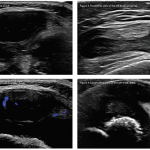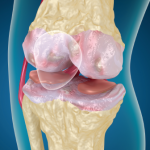Funck-Brentano et al. hypothesized that causal associations for osteoarthritis (OA) may differ by site, and they undertook this study to identify causal risk factors of knee, hip and hand OA.
Search results for: knee

Exercise Therapy Benefits Patients with Knee & Hip OA
A meta-analysis confirms prior research suggesting exercise therapy benefits patients with knee and hip osteoarthritis (OA). The study found greater improvements in pain, function, performance and quality of life in patients with milder, as opposed to more severe, OA…
Diet & Exercise: What’s the Economic Benefit for Overweight & Obese Patients with Knee OA?
New research recently found that, when combined with standard treatment, diet and exercise regimens are cost effective for overweight and obese patients with knee OA…

SM04690 Promising for Knee OA
SM04690, an intra-articular injection for knee OA, will soon enter phase 3 trials to assess its effects on pain, joint function and disease…
Knee Replacement in Younger Patients Has Higher Complication Rate
NEW YORK (Reuters Health)—Total knee replacement (TKA) is increasingly being performed in younger patients, and new research suggests that these patients have a higher risk for complications than older patients. “The number of knee replacements we are doing in younger and younger patients keeps increasing every year and we need to let these patients know…

The Diagnostic View: Ultrasound of a Child’s Sore Knee
Editor’s note: In this recurring feature, we first present a series of ultrasound images for your review, and then a brief discussion of the findings and diagnosis. Before you scroll to the discussion, examine these images carefully and draw your own conclusions. History A 2-year-old boy with a history of multiple strokes and vertebral artery…
Hip Exercises May Improve Walking, Pain with Knee Arthritis
(Reuters Health)—Patients with knee osteoarthritis (OA) can add hip-strengthening exercises to their workout to improve the ability to walk and maybe reduce pain, according to a research review. Based on pooled data from eight clinical trials with a total of 340 patients, hip strengthening exercises involving weights or elastic bands would help the most, the…
Does Loss of Skeletal Muscle Mass Increase the Risk of Knee OA?
Obesity is a well-known risk factor for knee osteoarthritis (OA), but data regarding the association of body composition (fat and muscle mass) with the risk of knee OA are lacking. Thus, it is not clear whether the effects of BMI, typically interpreted as effects of obesity, are truly due to excess adiposity rather than to overall loading due to the combined weight of body mass. Misra et al. undertook this study to examine the longitudinal association of body composition categories based on fat and muscle mass with the risk of incident knee OA…

Nonsurgical Therapies for Knee OA Pain: From Medications to Bracing to Exercise, What Works & What Doesn’t
CHICAGO—Many nonsurgical therapies are available for knee osteoarthritis pain, but they vary greatly in effectiveness. “How should I proceed and figure out what to do with our patients?” asked David T. Felson, MD, MPH, professor of medicine at Boston University School of Medicine, during OA Management Without Surgery in 2018, a session at the 2018…

Biomarkers for Knee OA
Knee osteoarthritis (OA) accounts for more than 80% of OA disease burden and has doubled in prevalence in the mid-20th century in the U.S. when compared with people who lived during early industrial era (1800s to early 1900s).1 Currently, the diagnostic and treatment armamentaria are limited. Disease progression is measured by joint space narrowing on…
- « Previous Page
- 1
- 2
- 3
- 4
- 5
- …
- 80
- Next Page »